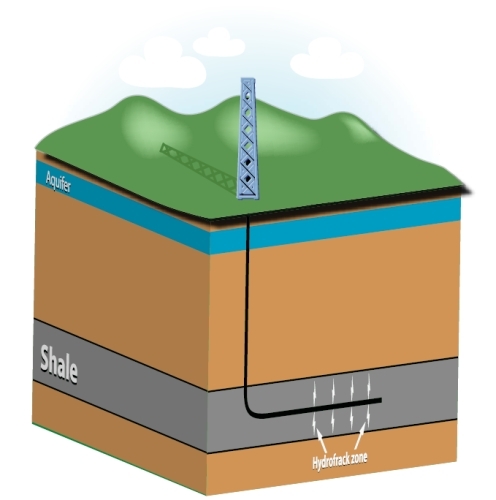Shale gas has helped the US increase its domestic energy supply and reduce its dependence on imports. In Europe, the exploitation of shale gas is just starting, and only in some countries. Shale gas may reduce reliance on external gas supplies, but there are concerns about environmental impacts and reduced investment in renewable energies. It remains to be seen to what extent Europe can benefit from shale gas while meeting climate targets and environmental standards.
US shale gas revolution
Shale gas has transformed the energy market in the US over the past decade. Jobs have been created, low gas prices have increased industrial competiveness, and switching electricity generation from coal to gas has reduced carbon emissions.
Various factors have contributed to the success of shale gas in the US: independent drilling companies, favourable geology, fully liberalised energy markets, accessible gas pipeline networks, low population density, and property rights that favour land-owners.
Economic: The development of new gas resources has the potential to increase energy supply, lower prices, and improve energy security. A European Commission study concludes that shale gas could help avoid increasing dependence on imports, but would not make the EU self-sufficient in gas.
Environmental: Shale gas is extracted by horizontal drilling and hydraulic fracturing – blasting underground rock with large volumes of water mixed with sand and chemicals. Toxic chemicals or methane can leak into ground water if a well is not properly constructed. A 2011 EP Policy Department study recommends restricting the number of chemicals allowed. Shale gas extraction takes up land and causes traffic, noise and wastewater (which may however be re-used). Hydraulic fracturing may provoke minor earthquakes. A study carried out for the European Commission on environmental and health risks (2012) recommends assessing the adequacy of current legislation.
Climate impacts of shale gas are comparable to those of conventional gas, provided that methane leaks can be minimised. By replacing carbon-rich coal, gas can have a key role in decarbonising the economy, according to the European Commission’s 2050 Energy Roadmap. On the other hand, higher carbon emissions would result if shale gas developments lead to increased gas consumption or to reduced investments in renewable energies.
Shale gas in the EU
The development of shale gas extraction in the EU is the responsibility of Member States. Some have permitted shale gas exploration: Poland, Austria, Germany, Sweden, the Netherlands and the UK. On the other hand, Bulgaria, France and Romania have a ban or moratorium on shale gas development.
European shale gas resources are estimated at 16 trillion m3, compared to 20 trillion m3 for the US. However, it will take more exploration to find out how much can be extracted at reasonable cost. If development goes ahead, Europe could start producing gas from shale around the end of this decade.
Positions
The EP’s ITRE committee (rapporteur Niki Tsavela, EFD, Greece) calls on Member States to adopt a robust regulatory framework. The ENVI committee (Bogusław Sonik, EPP, Poland) emphasises the need for risk management. Both committees stress the importance of transparency and public consultation.
Environmental NGOs, including Greenpeace and Friends of the Earth, oppose shale gas because of its greenhouse gas emissions and environmental risks. The International Energy Agency has proposed ‘golden rules’ that would address public unease about land use, noise, water pollution and environmental damage.
Shell CEO Peter Voserconsiders the European potential for shale gas as limited due to legislation, regulation and high population density.









[…] how Europe’s energy supply will be secured for the future? You have probably heard about shale gas, but perhaps you still don’t know how it affects the environment? Our briefing clarifies all […]
[…] Shale gas in Europe: prospects and risks. Ahead of the heated debate on shale gas in the EP, we published a briefing on the prospects and […]
[…] Shale gas in Europe: prospects and risks (libraryeuroparl.wordpress.com) […]
Russia vs Turkey : The Geopolitics of the South & the Turk Stream Pipelines
https://iakal.wordpress.com/2015/05/29/russia-vs-turkey-the-geopolitics-of-tuth-the-turk-stream-pipelines/